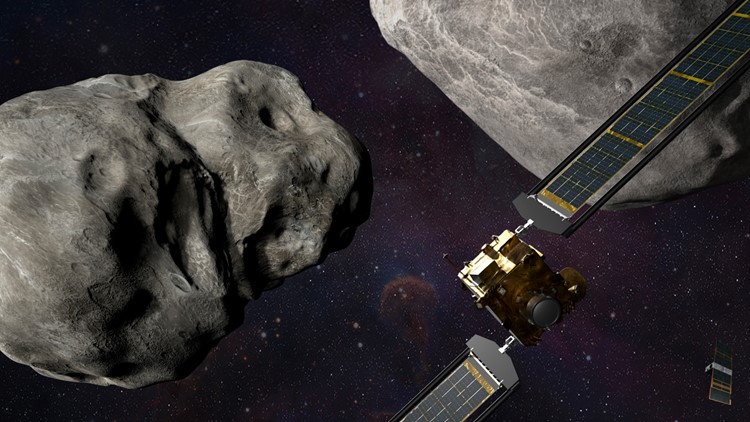Want to see a spacecraft smash into an asteroid... for science?
It sounds a lot like a movie plot, but it's actually a NASA experiment that could have big implications for planetary defense. If the spacecraft — named Dart — can knock a small, harmless asteroid into a changed orbit, we might have a fighting chance if a killer asteroid ever comes Earth's way.
NASA streamed a live feed from the spacecraft as it crashed into the asteroid Monday evening, which you can watch below and on the agency's website.
Watch:
The $325 million planetary defense test aims to nudge the asteroid (named Dimorphos, if you're wondering) into a tighter path around the larger space rock it orbits. We won't know right away if the test works — it may take days or weeks to measure any changes.
Either way, NASA says there's no chance Dimorphos or its larger friend will ever threaten Earth.
What to expect:
Dart, short for Double Asteroid Redirection Test, has just one camera for navigation and filming. Images from the camera are used in autonomous navigation and will be streamed back to Earth at one per second.
Dimorphos will emerge as a small dot of light an hour before impact, looming larger and larger in the camera images beamed back to Earth until it takes up the entire field of view.
You won't see an action movie explosion when Dart, lighter than a compact car at 1,260 pounds, slams into 11 billion-pound Dimorphos.
“This really is about asteroid deflection, not disruption," Nancy Chabot, a planetary scientist and mission team leader at the Johns Hopkins University lab managing the project, told the Associated Press. "This isn’t going to blow up the asteroid. It isn’t going to put it into lots of pieces.”
The crash is expected to cause a substantial crater and hurl 2 million pounds of rocks and dirt into space. And of course, it will be the end of the road for Dart.
What if it misses?
Managers are confident Dart won’t smash into the larger space rock by mistake. The spacecraft's navigation is designed to distinguish between the two asteroids and target the smaller one.
NASA puts the odds of a complete miss at less than 10%.
Associated Press reporter Marcia Dunn contributed to this report.



